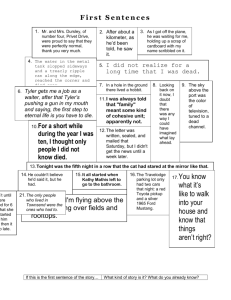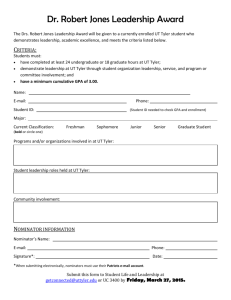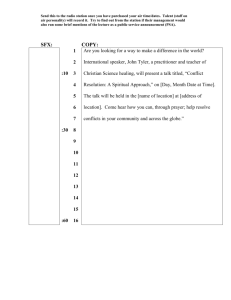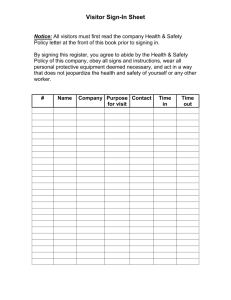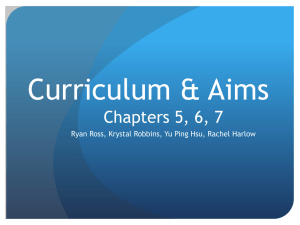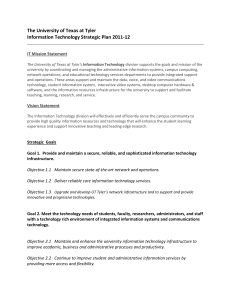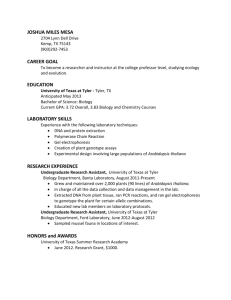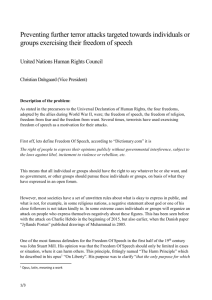Sign Language Activities - Center for Early literacy Learning
advertisement
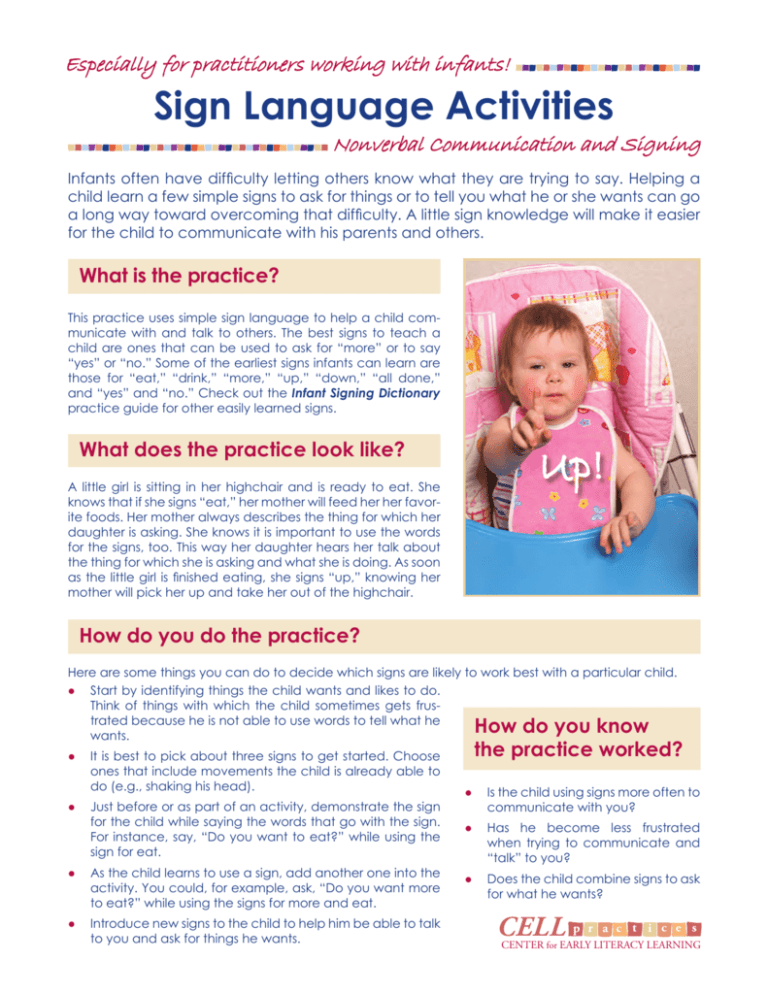
Especially for practitioners working with infants! Sign Language Activities Nonverbal Communication and Signing Infants often have difficulty letting others know what they are trying to say. Helping a child learn a few simple signs to ask for things or to tell you what he or she wants can go a long way toward overcoming that difficulty. A little sign knowledge will make it easier for the child to communicate with his parents and others. What is the practice? This practice uses simple sign language to help a child communicate with and talk to others. The best signs to teach a child are ones that can be used to ask for “more” or to say “yes” or “no.” Some of the earliest signs infants can learn are those for “eat,” “drink,” “more,” “up,” “down,” “all done,” and “yes” and “no.” Check out the Infant Signing Dictionary practice guide for other easily learned signs. What does the practice look like? A little girl is sitting in her highchair and is ready to eat. She knows that if she signs “eat,” her mother will feed her her favorite foods. Her mother always describes the thing for which her daughter is asking. She knows it is important to use the words for the signs, too. This way her daughter hears her talk about the thing for which she is asking and what she is doing. As soon as the little girl is finished eating, she signs “up,” knowing her mother will pick her up and take her out of the highchair. Up! How do you do the practice? Here are some things you can do to decide which signs are likely to work best with a particular child. ● Start by identifying things the child wants and likes to do. Think of things with which the child sometimes gets frustrated because he is not able to use words to tell what he wants. ● It is best to pick about three signs to get started. Choose ones that include movements the child is already able to do (e.g., shaking his head). ● Just before or as part of an activity, demonstrate the sign for the child while saying the words that go with the sign. For instance, say, “Do you want to eat?” while using the sign for eat. ● As the child learns to use a sign, add another one into the activity. You could, for example, ask, “Do you want more to eat?” while using the signs for more and eat. ● Introduce new signs to the child to help him be able to talk to you and ask for things he wants. How do you know the practice worked? ● Is the child using signs more often to communi­cate with you? ● Has he become less frustrated when trying to communicate and “talk” to you? ● Does the child combine signs to ask for what he wants? CELL p r a c t i c e s CENTER for EARLY LITERACY LEARNING Take a look at more sign language activities Keeping It Going Eight-month-old Kayla especially enjoys playing different lap games with her family members. She has been trying to tell them she wants to continue a game they are playing. However, it is difficult for Mom, Dad, and Kayla’s big brother to know exactly what Kayla wants or is trying to say. Kayla’s home visitor teaches her and her big brother, Andy, a few simple signs by asking her, “Do you want to play again? Do you want more?” while signing “more.” It does not take Kayla long to figure out that by tapping her fingers and hands together a few times Andy will play the game again. Kayla has even started to use the sign for “more” to ask her mom or brother to give her more to eat. She also uses the “more” sign to ask for more toys with which to play. Her parents and brother have begun learning other signs to teach her when she is ready for them. Fine Signs for Meal Time More! Lunchtime at day care used to be a hazardous event until 10-month-old Tyler learned the signs “eat,” “drink,” “more,” and “finished.” If his caregiver, Tina, gave him the “wrong thing” it was surely going to wind up on the floor! Now Tina begins meal times by asking Tyler if he wants something to eat or drink while signing each of the words. As he gets closer to finishing, Tina asks Tyler if he wants “more to eat?” while using both signs together. Tyler answers by signing “drink.” Tina responds by sign­ing “more drink” and saying, “Tyler wants more juice to drink.” When Tyler seems about done, Tina asks, “Is Tyler finished?” while signing “finished.” Tyler repeats the sign, and meal time is once again a big success. Making It Clear Eighteen-month-old Martin is a little boy with Down syndrome who can say about 10 words, but most people have difficulty under­ standing what he is saying. Through working with Martin’s early interventionist, his parents have recently learned about using sign language with young children with Down syndrome. They now know that sign language not only helps the children communicate better, but it also improves their language production. Martin’s parents start with four signs that “go with” things Martin especially likes. They pick the signs for “up,” “again,” “bath,” and “down.” “Up” is used to ask to be picked up. “Again” is used to have Mom or Dad keep playing with Martin. “Bath” is used to ask to play in the bathtub with toys. “Down” is used to tell Mom and Dad Martin is fin­ished eating and “wants out” of his high chair. Martin not only uses the signs more and more often, but the words that go with each of the signs have also become easier for others to understand. Again! ©CELL CELLpractices Is a publication of the Center for Early Literacy Learning (CELL), funded by the U.S. Department of Education, Office of Special Education Programs (H326B060010). The opinions expressed, however, are those of CELL and not necessarily those of the U.S. Department of Education. Copyright © 2010 by the Orelena Hawks Puckett Institute, Asheville, North Carolina (www.puckett.org).
